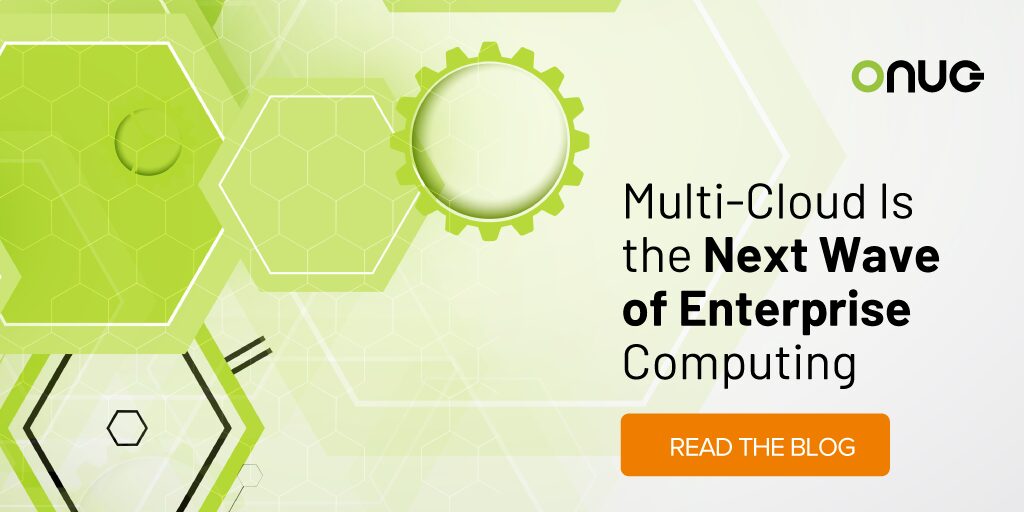
Multi-Cloud Is the Next Wave of Enterprise Computing
Enterprise computing is multi-cloud computing; it’s hard, complex but so worth it as your IT organization gains control and choice for developer and infrastructure teams. Infrastructure teams’ main job is to make life easier for developers to write applications that deliver corporate digital value. Multi-cloud delivers the widest pallet of tools and constructs for corporations to create value for their customers and shareholders. But while multi-cloud may not be easy, being locked into a single cloud provider is far worse.
We all know that the public cloud providers are been some of the biggest recipients of pandemic IT spending. AWS owns some 33%, Azure 22% and Google Cloud Platform (GCP) 10% of the cloud infrastructure services market according to Synergy Research Group (SRG) and Canalys. Q1 enterprise spending on cloud infrastructure services was near $53B. That is up 34% from the first quarter of 2021, making it the eleventh time in 12 quarters that the year-on-year growth rate has been in the 34% to 40% range. The Cloud Infrastructure Services market includes laaS, PaaS and Hosted Private Cloud.
But while the cloud service providers or CSPs have been growing, IT organizations are struggling to consume services from multiple CSPs, thanks to a host of issues, such as differing tooling, application development constructs, operational models, consumption models, master service agreements, etc.
Some tried to avoid multi-cloud and put all their “eggs in one basket” by going “All In” with AWS. The results are now in: that was a huge mistake and failure. Those who shutdown data centers and put all their applications in AWS now find their business processes and workflows entangled, entwined and constrained by the very services that AWS provides. Their businesses now have to function within the framework of AWS services and its cadence of new service delivery. While this may be acceptable for the smaller midsize enterprise and below, it’s a disaster for the large enterprise. At ONUG Fall, you’ll hear directly from IT business leaders about the dangers and expense of this level of lock-in. Those who bought into “All In” are now more locked in than corporations were in the 80s and 90s with IBM. The only way out is to go multi-cloud.
At ONUG Fall, our Board has put together a range of sessions, discussions, networking opportunities and training to enable large corporations to build multi-cloud infrastructure. This content will enable IT teams to provide choices and options so their corporations may thrive as a digital enterprise. For example:
- The Cloud Security Notification Framework (CSNF), a multivendor, multi-cloud approach to cloud security, will be demonstrating live on the showfloor how to increase the efficacy of your SecOps and reduce its toil as it operationalizes multi-cloud. There will be training sessions on getting started with CSNF, thanks to ONUG Collaborative member Triggermesh and its Starter Kit.
- Policy as Code, or PaC, is at the top of the enterprise cloud stack. It delivers control, choice and options to the cloud consumer to ease multi-cloud consumption and operations. The ONUG Collaborative kicks off a new working group, building upon CSNF at ONUG Fall, that starts a journey of a consumer-lead PaC approach.
- A new Wide Area Networking Paradigm for the Cloud Era track at ONUG Fall is available to help IT teams build multi-cloud connectivity. Multi-cloud network connectivity challenges include applications/data and users/endpoints access. Developers’ use of cloud services to build applications has created new requirements for wide area networking. Applications and data are being modularized into microservices and moved to multiple public clouds. In some cases, they are also being distributed to the network edge. They are also increasingly being consumed from multiple software-as-a-service (SaaS) providers.
With applications and microservices popping up across all domains, the network should be seen more as a growing set of interconnected “nerve clusters” situated where the data is, which could be anywhere along the edge-cloud continuum. The new network needs to be able to securely connect within and between these interconnected “nerve clusters” as well as fundamentally understand how their new application models work and to dynamically extend application policies across the network to wherever the applications are hosted. While carrier-neutral colocation facilities are not new, they take on a much-expanded role in the age of multi-cloud and are a critical component of the new cloud-optimized WAN architecture. In essence, colocation facilities are poised to become an extension of the enterprise WAN, providing visibility, high-performance access and centralized security to multiple SaaS and IaaS providers.
Enterprise Wide Area Networking and security need to be simplified by delivering both as a cloud service closest to the source of connection (user, device, branch office, IoT device, edge computing location) rather than the enterprise data center.
These sessions are workshops at ONUG Fall to help community members design multi-cloud connectivity at scale.
New Training: There are new training sessions at ONUG Fall that will help SOC and NOC teams use AI and ML to automate and operationalize for multi-cloud.
Live Multi-Cloud Demonstrations: Three pavilions providing live demonstrations of multi-cloud connectivity, hyperautomation and security will be on display so your IT teams can see what part of multi-cloud infrastructure is realistic to build. You know it works because you saw it at ONUG.
Great Content: As always, ONUG Fall will have exclusive sessions providing content from large enterprise tech consumers, IT suppliers delivering multi-cloud Proofs of Concept, keynotes that show great partnerships between suppliers and consumers, and career advice from some of the most accomplished IT business leaders.
Fun: We don’t forget to pack fun into every ONUG with cocktail receptions and a host of dinners to attend, networking with peers, raffles, swag, favor bags and more.
Multi-cloud is the next wave of enterprise computing. There is no better place under the Milky Way to educate yourself on how to exploit multi-cloud for corporate advantage than at ONUG Fall.


